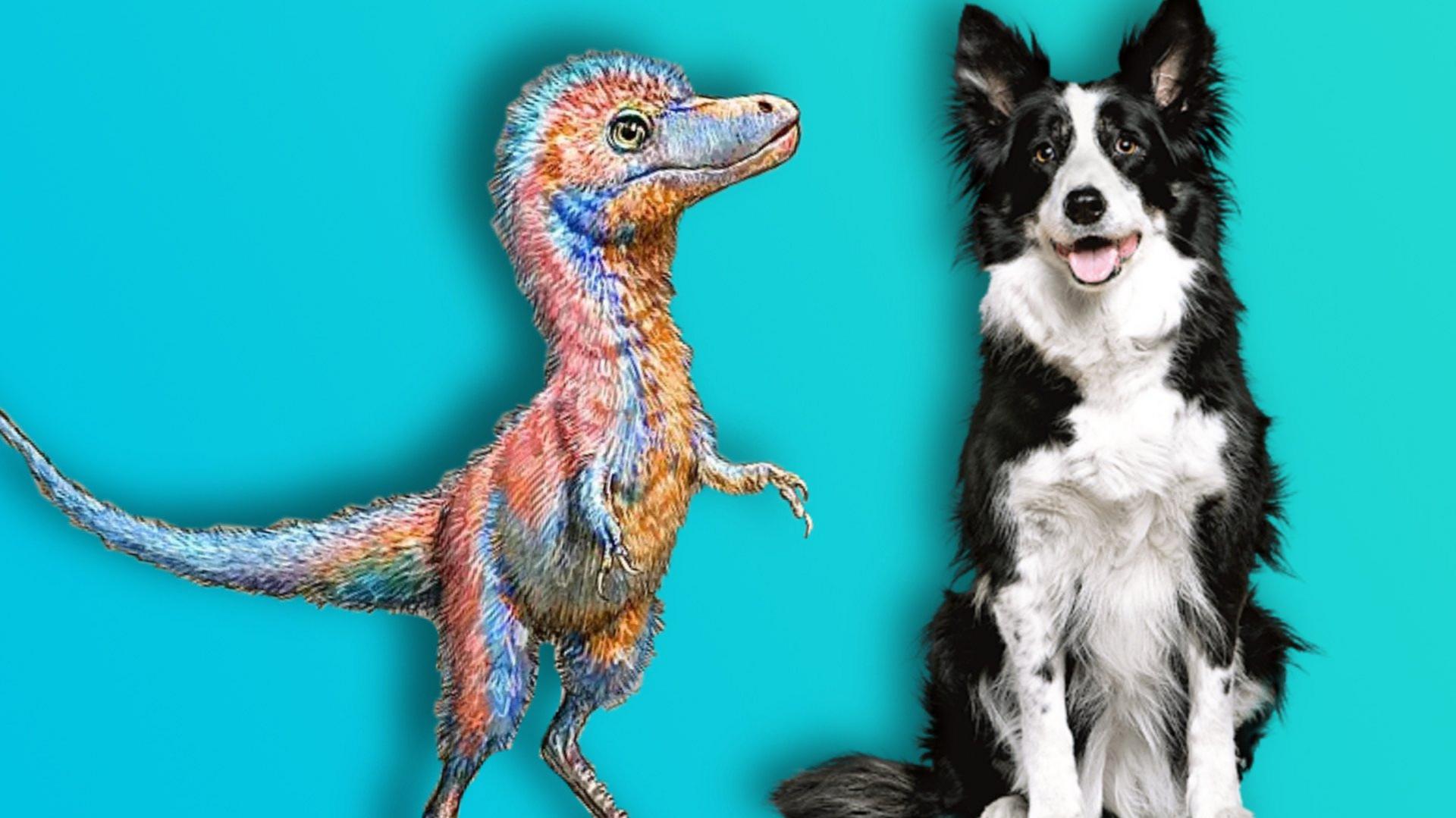Dinosaurs: Mystery of T-Rex jaw revealed!
- Published
- comments
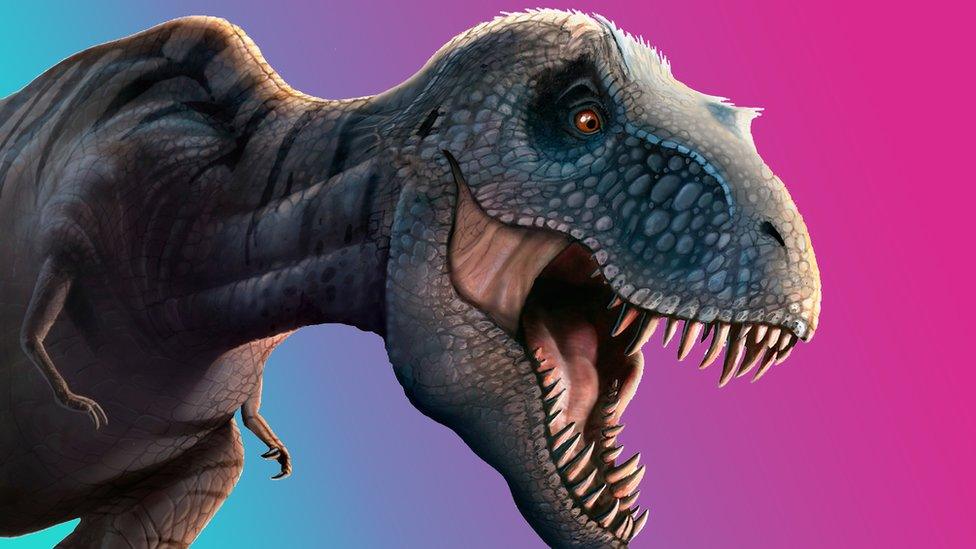
The T-Rex might be the most famous and fearsome dinosaur of all time, but scientists are still discovering more about them.
Researchers have now unearthed the secret to the Tyrannosaurus Rex's killer jaw and revealed it was able to bite through bone by keeping its lower jaw steady like an alligator, rather than flexible like a snake.
Palaeontologists - who study dinosaurs - say the finding about the jaw of the famous carnivorous dinosaur sheds new light on how the predator ate.
How did scientists make the discovery?
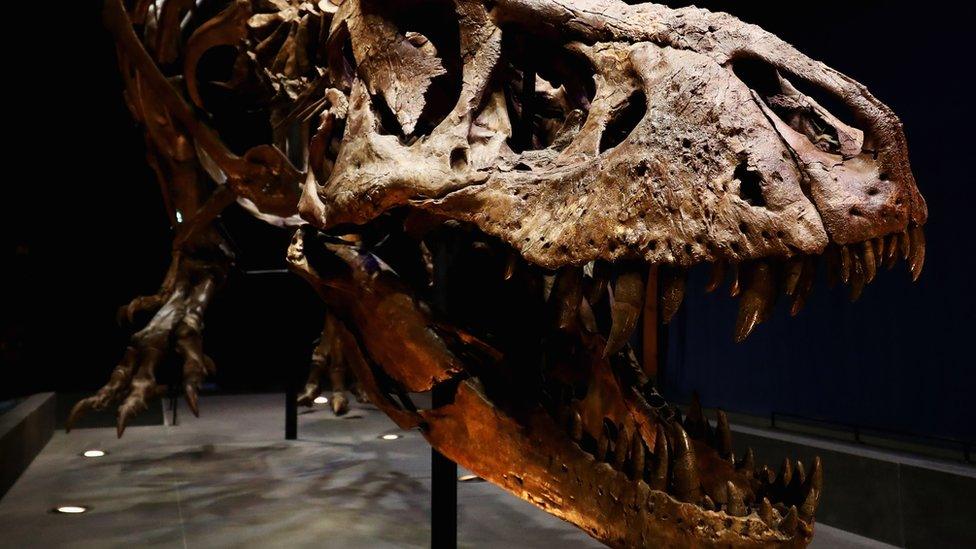
Researchers used scans of dinosaur fossils and modern reptiles to build a detailed 3D model of the T-Rex jaw.
This included bone, tendons and specialised muscles that wrap around the back of the jaw, which previous studies did not look at.
John Fortner, a doctoral student in anatomy at the University of Missouri and the lead author of the study said: "We are modelling dinosaur jaws in a way that simply has not been done before."
What did they find?
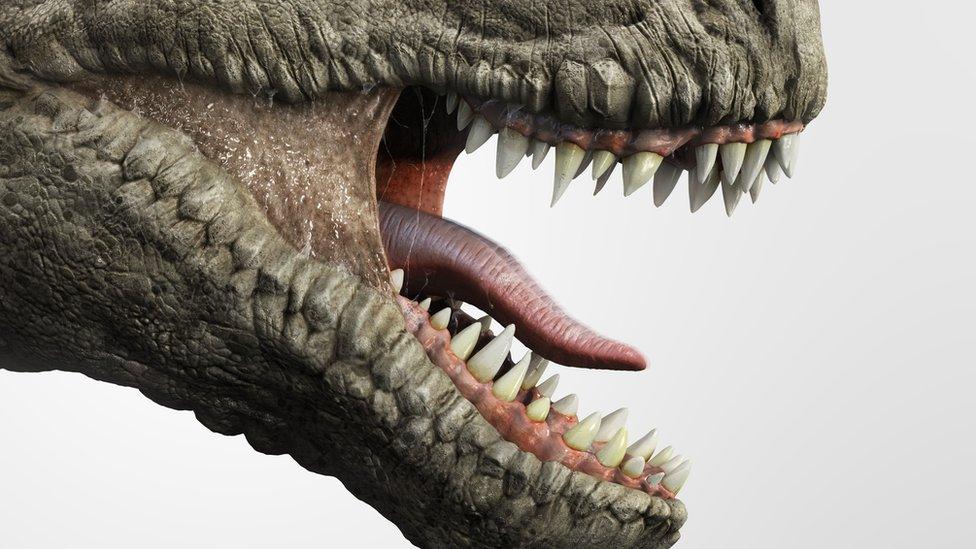
Dinosaurs had a joint in the middle of their lower jaws, called the intramandibular joint, which is also present in modern-day reptiles.
Previous research suggested this joint was flexible - like in snakes. It was thought this helped carnivorous dinosaurs to keep struggling prey in their jaws.
However, it has been unclear whether the jaws were flexible at all, or how they could be strong enough to bite through and ingest bone - which the T-Rex did regularly.
The team ran a series of tests to find out whether the joint became flexible under the forces required to crunch through bone.
"We discovered that these joints likely were not flexible at all, as dinosaurs like T. rex possess specialised bones that cross the joint to stiffen the lower jaw," said John Fortner.
"The discoveries we make about T-Rex's can provide more clarity on the diversity of feeding function in today's reptiles, like crocodilians and birds."
- Published15 April 2021
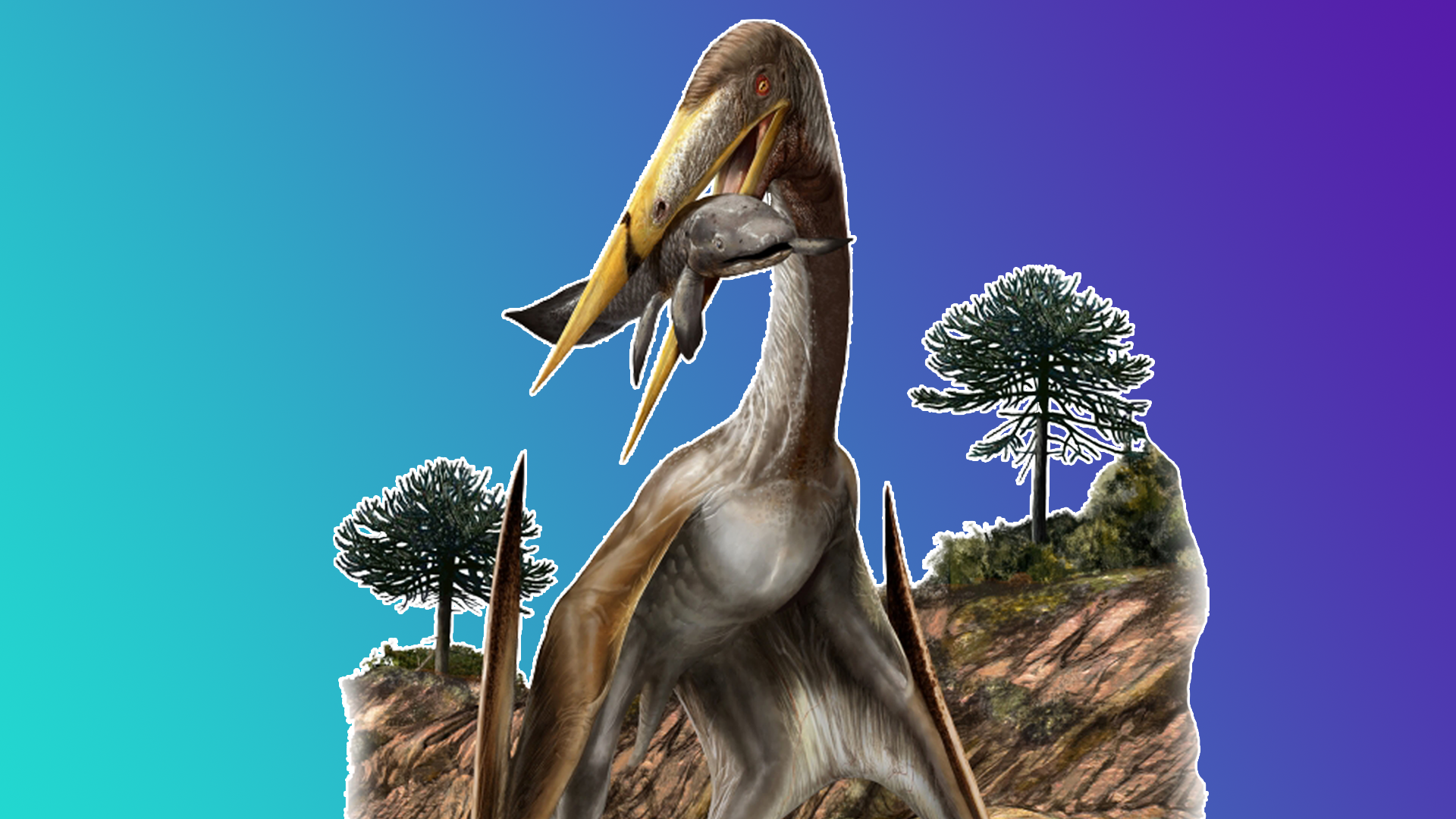
- Published7 August 2020
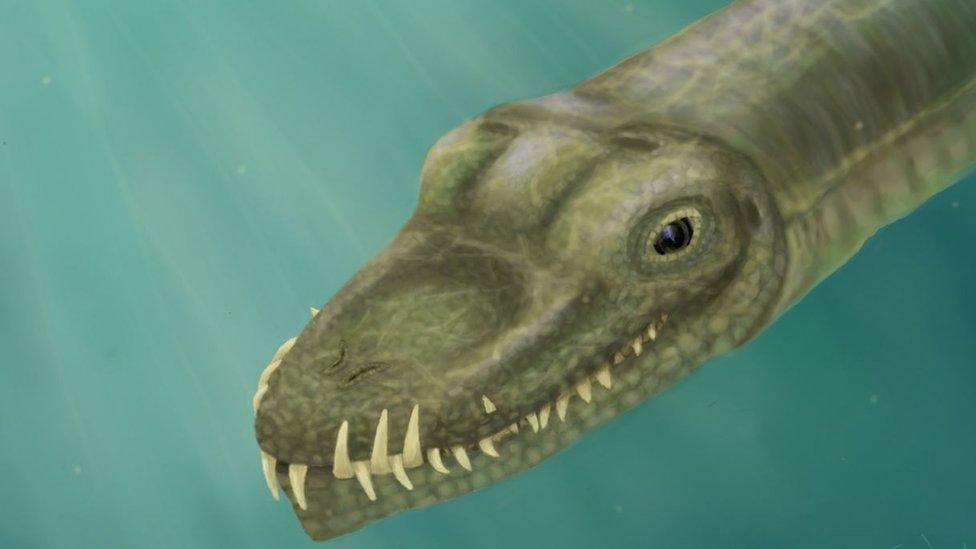
- Published25 January 2021
